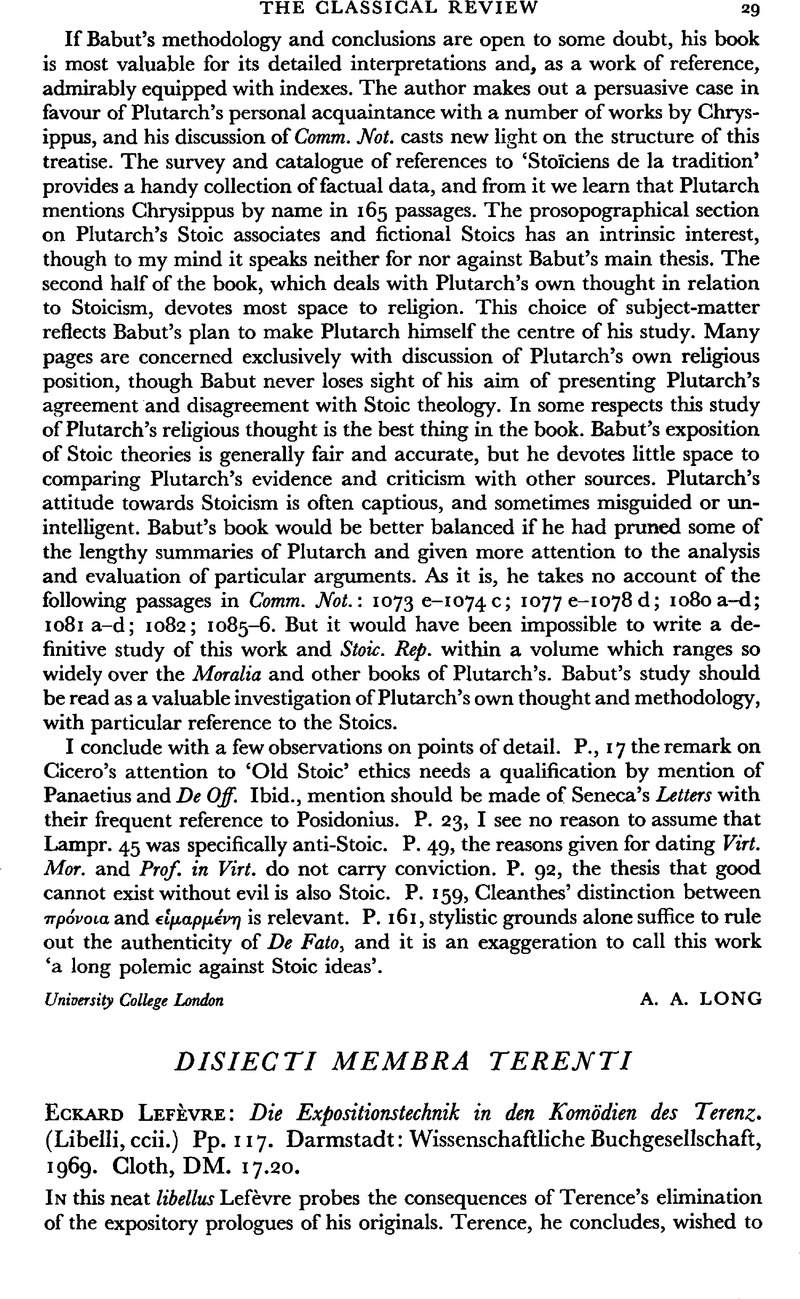No CrossRef data available.
Article contents
Disiecti Membra Terenti - Eckard Lefèvre: Die Expositionstechnik in den Komödien des Terenz. (Libelli, ccii.) Pp. 117. Darmstadt: Wissenschaftliche Buchgesellschaft, 1969. Cloth, DM. 17.20.
Published online by Cambridge University Press: 27 February 2009
Abstract

- Type
- Reviews
- Information
- Copyright
- Copyright © The Classical Association 1972
References
page 30 note 1 Similarly (and rightly) W. Ludwig, ‘The Originality of Terence and his Greek Models’, G.R.B.S. ix (1968), 169–82.
page 30 note 2 Chrysis in Menander; Phaedria was his Chairestratos, Parmeno was his Daos (Σ in Pers. 5. 161 ff.). Here and elsewhere I call the Menandrian characters by their Terentian names.
page 30 note 3 He cites Jachmann, Drexler, Knoche, Dieffenbach, Reitzenstein, Webster, Haffter, and Bianco for this view; I shall prefer to differ, with Wilamowitz: ‘Im Eunuchus … vermissen wir den Gott nicht, können ihn sogar schwer denken’, Schiedsgericht, 147; see below.
page 30 note 4 Donatus ad 110, bene ‘arbitror’ et nil certi …
page 30 note 5 The point (not made by Lefèvre) that Parmeno ‘ought’ to mention Thais's informtian ation to Chaerea to dissuade him from his plan would be the definition not of a dramatic flaw but of one of the dim Parmeno's several ⋯μαρτ⋯αι.
page 31 note 1 It is a priori unlikely that 145–9 should be a ‘Terentian addition’ (transference, or invention? Lefèvre does not say): her frankly admitted enlightened self-interest is ⋯ν ἤθει, Attic, and Menandrian (cf. Epitr. 329 ff.), and suits the context perfectly.
page 31 note 2 And mistakenly states that we do not see Thais again before Chremes' arrival: what about 454 ff.?
page 31 note 3 For example, Terence's shadowy and deceased (?) hospes who brought Thais from Samos to Athens and is responsible for her wealthy independence may have been alive, jealous, and in possession of the girl after returning from a trip to Samos: the sandwiching of our soldier's (undefined) intimacy with Thais between that of the hospes and that of Phaedria is curiously awkward (119, 122–3/125–7). But this is not the only possibility. Lefèvre should at least have tried to define the area of i. 2 involved (119–36).
page 31 note 4 Cf. Men. Sik. 200f.
page 32 note 1 I shall develop this view of Dorias in a forthcoming paper.
page 32 note 2 It is already out of date: the author could not use the Aspis or Samia of Austin; more culpably, he neglects the Sikyonioi (as we must learn to call it: cf. W. G. Arnott, Arethusa, iii [1970], 58f.) and Misoumenos.


